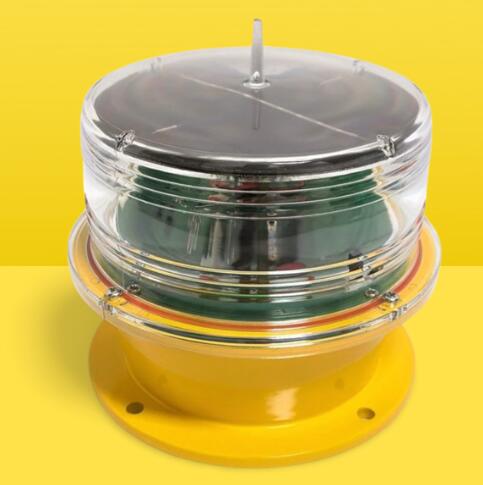Illuminating Maritime Safety: The Role of Marine Solar Lanterns
In the world of maritime navigation, dependable lighting solutions are essential for ensuring the safety and efficiency of vessels operating in various waterways. Marine solar lanterns have emerged as a game-changing innovation, offering an eco-friendly, cost-effective, and reliable alternative to traditional navigation lights. These solar-powered devices are transforming the way maritime industries illuminate their paths, delivering benefits that extend well beyond the seas.
A Sustainable Alternative
Marine solar lanterns utilize renewable solar energy to power their illumination systems, eliminating the need for traditional fuel-based or grid-connected lighting. This transition to solar power is not just an environmental choice but also a practical one. By harnessing sunlight during the day, marine solar lanterns store energy in high-capacity batteries, ensuring continuous operation throughout the night. This sustainable approach significantly reduces carbon footprints and aligns with global efforts to combat climate change.
Enhancing Safety and Visibility
Safety is a paramount concern in maritime navigation, and marine solar lanterns excel in addressing this need. Their bright, consistent illumination serves as a critical guide for vessels navigating through harbors, channels, and open waters. These lanterns are often equipped with advanced features, such as programmable flash patterns, high-intensity LEDs, and automatic activation at dusk, making them highly effective in enhancing visibility and reducing the risk of collisions.

Moreover, marine solar lanterns are designed to withstand the harshest marine conditions. Built with durable, corrosion-resistant materials, they remain operational despite exposure to saltwater, strong winds, and extreme temperatures. This reliability ensures that the safety of mariners is never compromised.
Cost Efficiency and Low Maintenance
One of the standout advantages of marine solar lanterns is their cost efficiency. Unlike traditional lighting systems that require extensive cabling, fuel supplies, or regular maintenance, these solar-powered devices operate autonomously. The initial investment in marine solar lanterns is quickly offset by the elimination of ongoing energy and maintenance costs.
| Marine Solar Lanterns |
| Marine Solar Lantern |
Additionally, marine solar lanterns require minimal upkeep. Equipped with long-lasting LEDs and robust battery systems, they deliver consistent performance with minimal intervention. Their low maintenance requirements make them particularly advantageous for remote or hard-to-reach locations where regular servicing is impractical.
Versatile Applications
Marine solar lanterns find applications across a wide range of maritime and coastal settings. They are commonly used as navigational aids on buoys, docks, and piers, guiding vessels safely through designated routes. In offshore installations, these lanterns mark critical structures such as oil rigs, wind farms, and research platforms, ensuring their visibility to passing ships.
In addition to traditional navigation uses, marine solar lanterns are employed to mark protected marine areas, swimming zones, and fishing boundaries. Their versatility extends to emergency situations, where they can serve as temporary lighting solutions for rescue operations or disaster response efforts.
Driving Innovation in Marine Technology
The ongoing advancements in solar and battery technology have propelled marine solar lanterns to new levels of efficiency and performance. Modern designs incorporate features such as GPS synchronization, remote monitoring, and adjustable light intensities. These innovations enable operators to customize and control lighting systems with precision, enhancing their utility in diverse maritime contexts.
Smart technology integration is also paving the way for real-time data collection and analytics. By monitoring the status and performance of marine solar lanterns remotely, operators can optimize their operations, reduce downtime, and enhance overall efficiency. This technological evolution underscores the lanterns’ role in shaping the future of maritime safety and sustainability.
A Commitment to Environmental Stewardship
Beyond their functional benefits, marine solar lanterns represent a commitment to protecting marine ecosystems. Traditional lighting systems often rely on energy sources that contribute to environmental degradation. In contrast, solar-powered lanterns operate cleanly and quietly, minimizing their ecological impact.
Many manufacturers are furthering this commitment by incorporating recyclable and eco-friendly materials into their lantern designs. This focus on sustainability ensures that marine solar lanterns contribute positively to the health of our oceans and coastal areas while fulfilling their navigational purpose.
Marine solar lanterns are redefining maritime illumination by combining sustainability, reliability, and cost-effectiveness. Their ability to harness renewable energy, provide consistent lighting, and withstand challenging marine conditions makes them an indispensable tool for modern maritime operations. As industries continue to prioritize eco-friendly solutions, marine solar lanterns will play a vital role in shaping the future of navigation and safety.
Whether guiding ships through busy ports or marking offshore installations, marine solar lanterns illuminate the way forward with innovation and environmental consciousness. Their adoption signals a brighter and greener future for maritime industries worldwide.
